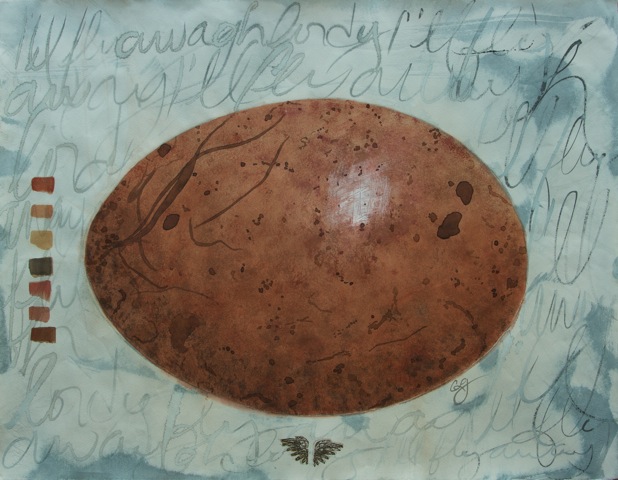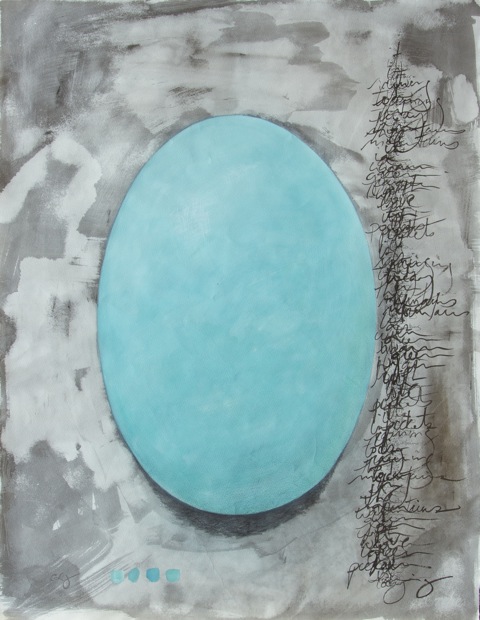







Your Custom Text Here
There are many things about birds that enchant me - flight, feathers, songs that fill the morning, nests built with beak and claw...and eggs. They are colored in rich blue and cream, soft olive and ochre. They may have speckles, splatters or graceful calligraphic markings. Their oval shapes vary from more round to more conical. Their permeable shells are fragile yet strong. And all of these characteristics are adaptations that help ensure the survival of new life within.
Eggs of the Common Murre have several compelling adaptations. Common Murres breed in dense colonies on cliff faces along the northern Atlantic and Pacific coasts. They build no nests. Each female lays a single egg on a bare rock ledge. The egg is pyriform in shape, strongly pointed at one end, so that it rolls in a tight circle if bumped. This helps prevent the egg from rolling off the cliff. The pyriform shape also allows more efficient heat transfer from the parent, which could be critical on bare rock, as compared to inside a nest lined with down. There is extraordinary variation in color and pattern of Common Murre eggs, from plain white to blue or green with extensive splotches and scrawls. Because the breeding colonies are so crowded that birds are nesting, literally, cheek by jowl, this could be an adaptation that helps parent murres recognize their own egg.
There are many things about birds that enchant me - flight, feathers, songs that fill the morning, nests built with beak and claw...and eggs. They are colored in rich blue and cream, soft olive and ochre. They may have speckles, splatters or graceful calligraphic markings. Their oval shapes vary from more round to more conical. Their permeable shells are fragile yet strong. And all of these characteristics are adaptations that help ensure the survival of new life within.
Eggs of the Common Murre have several compelling adaptations. Common Murres breed in dense colonies on cliff faces along the northern Atlantic and Pacific coasts. They build no nests. Each female lays a single egg on a bare rock ledge. The egg is pyriform in shape, strongly pointed at one end, so that it rolls in a tight circle if bumped. This helps prevent the egg from rolling off the cliff. The pyriform shape also allows more efficient heat transfer from the parent, which could be critical on bare rock, as compared to inside a nest lined with down. There is extraordinary variation in color and pattern of Common Murre eggs, from plain white to blue or green with extensive splotches and scrawls. Because the breeding colonies are so crowded that birds are nesting, literally, cheek by jowl, this could be an adaptation that helps parent murres recognize their own egg.
Gyrfalcon
20" x 26"
Great Blue Heron
20" x 26"
Rock Wren
26" x 20"
Sooty Tern
20" x 26"
Canyon Wren
26" x 20"
Common Murre
20" x 26"
Golden Eagle
20" x 26"
Red-winged Blackbird
20" x 26"